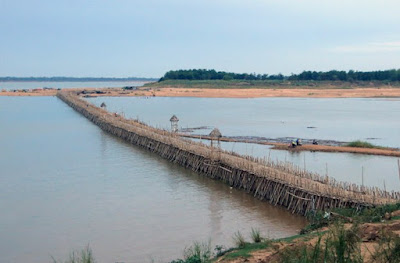The Nature of Cambodian Lakes: A Dynamic Ecosystem
Cambodia's lakes are characterized by their unique ecological features, primarily influenced by the seasonal fluctuations of the Mekong River. The most prominent example is the Tonle Sap Great Lake, Southeast Asia's largest freshwater lake.
Key characteristics of Cambodian lakes:
Seasonal Fluctuations: The water levels of many Cambodian lakes, especially those connected to the Mekong River, vary significantly throughout the year. During the rainy season, the Mekong River overflows, causing the Tonle Sap Lake to expand dramatically. This seasonal flooding creates a highly productive ecosystem.
Biodiversity: Cambodian lakes are home to a diverse range of aquatic species, including fish, reptiles, amphibians, and birds. The seasonal fluctuations contribute to this biodiversity by creating different habitats at different times of the year.
Human Interaction: Many Cambodian lakes are vital to local communities, providing resources for fishing, agriculture, and transportation. This human interaction has both positive and negative impacts on the ecosystems of these lakes.
The Tonle Sap Great Lake:
As the largest lake in Southeast Asia, the Tonle Sap plays a crucial role in Cambodia's ecology and economy. Its unique features include:
Reverse Flow: During the rainy season, the Mekong River reverses its flow, sending water into the Tonle Sap, causing the lake to expand significantly.
Floating Villages: The lake is home to numerous floating villages, where people live and work on houseboats.
Biodiversity: The lake supports a vast array of aquatic species, including fish, reptiles, and birds.



Comments
Post a Comment